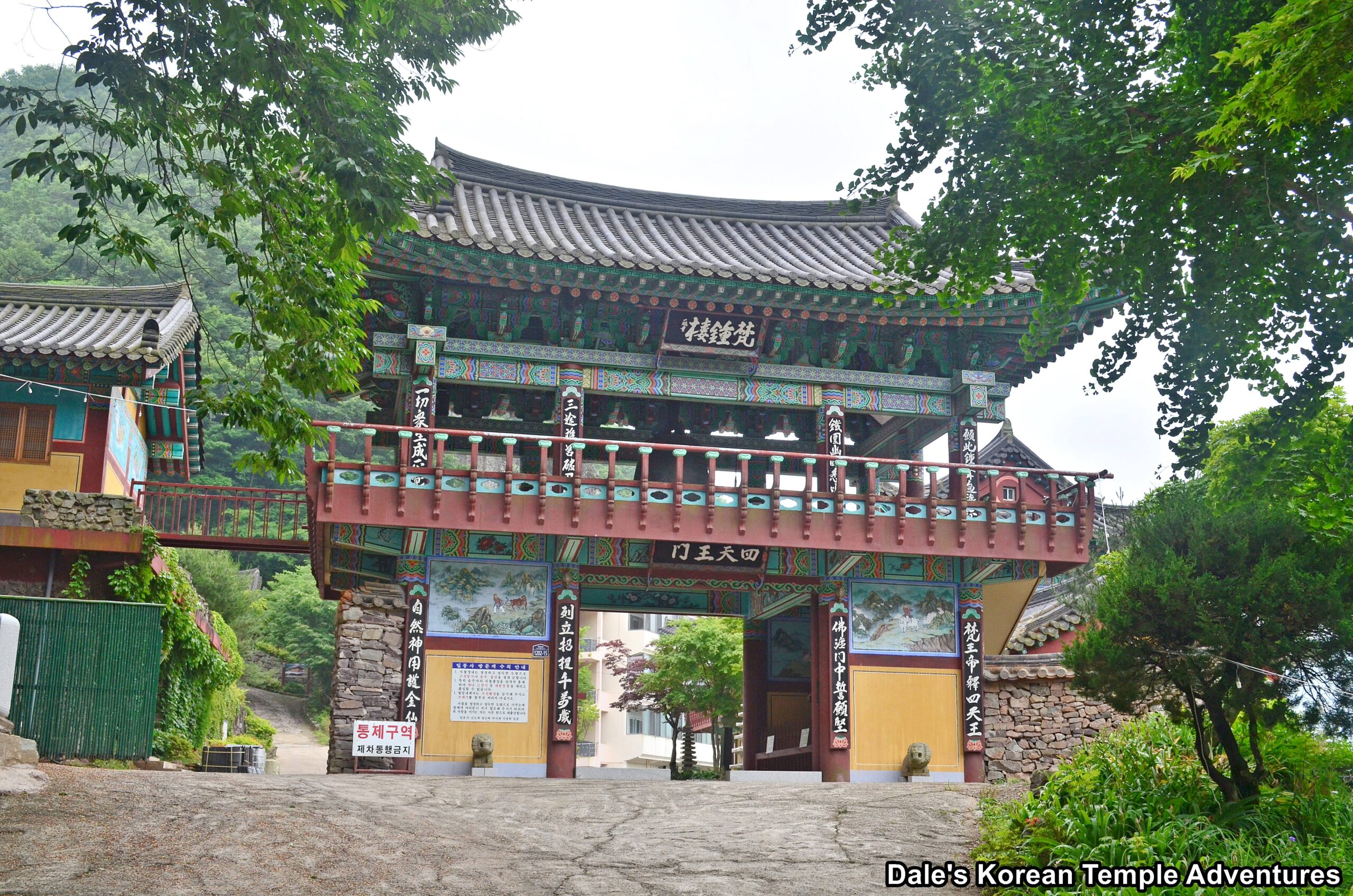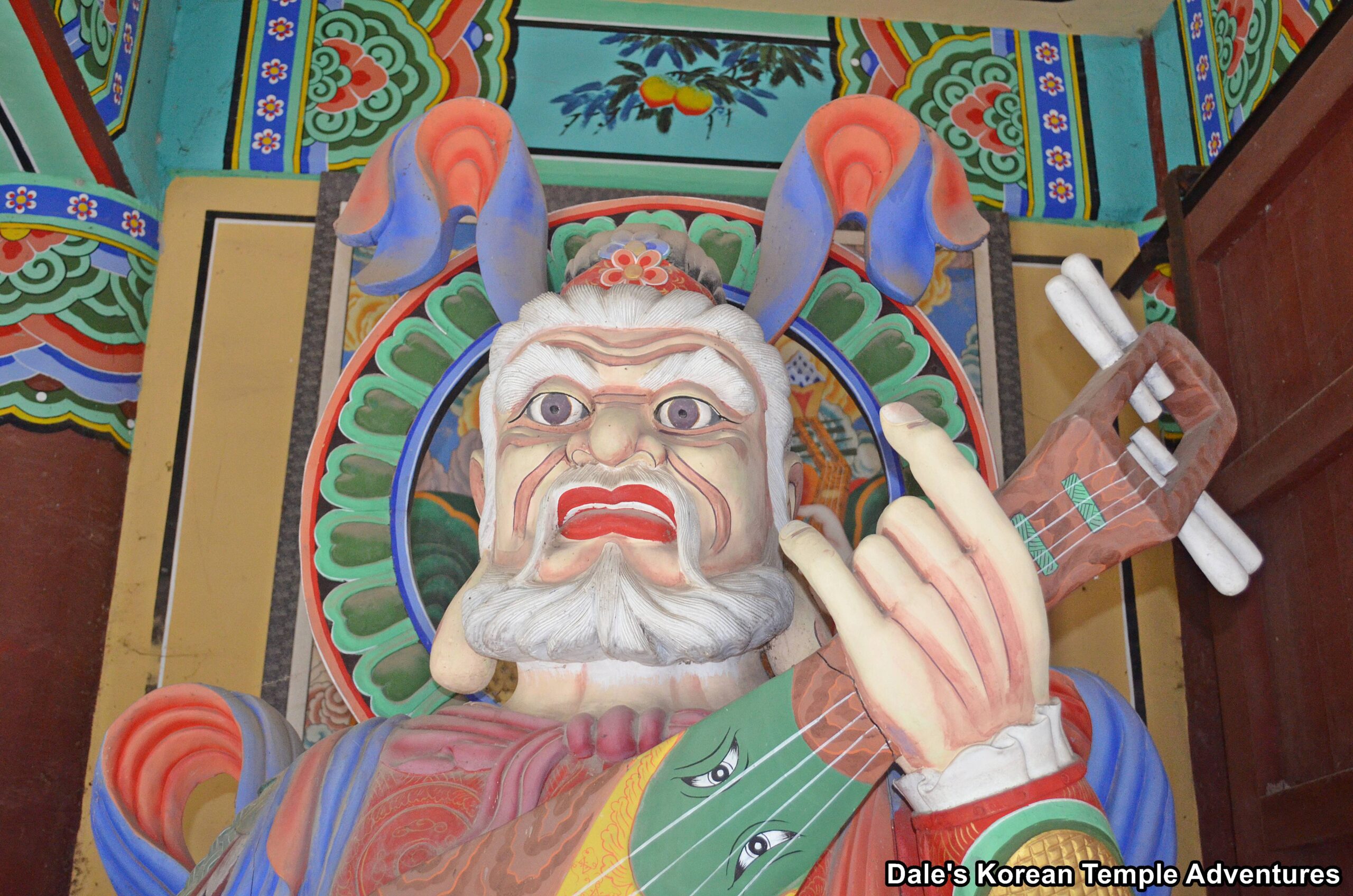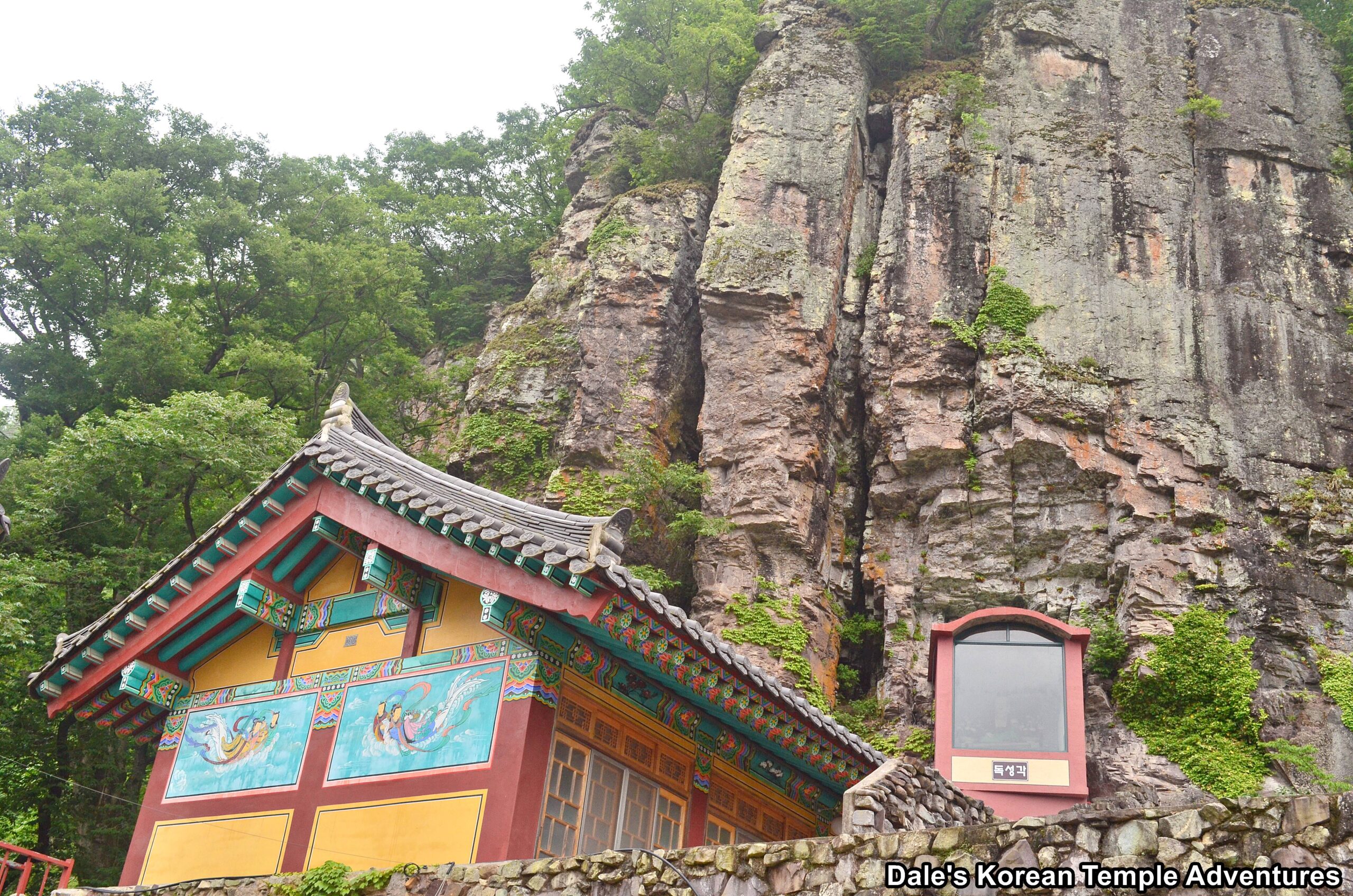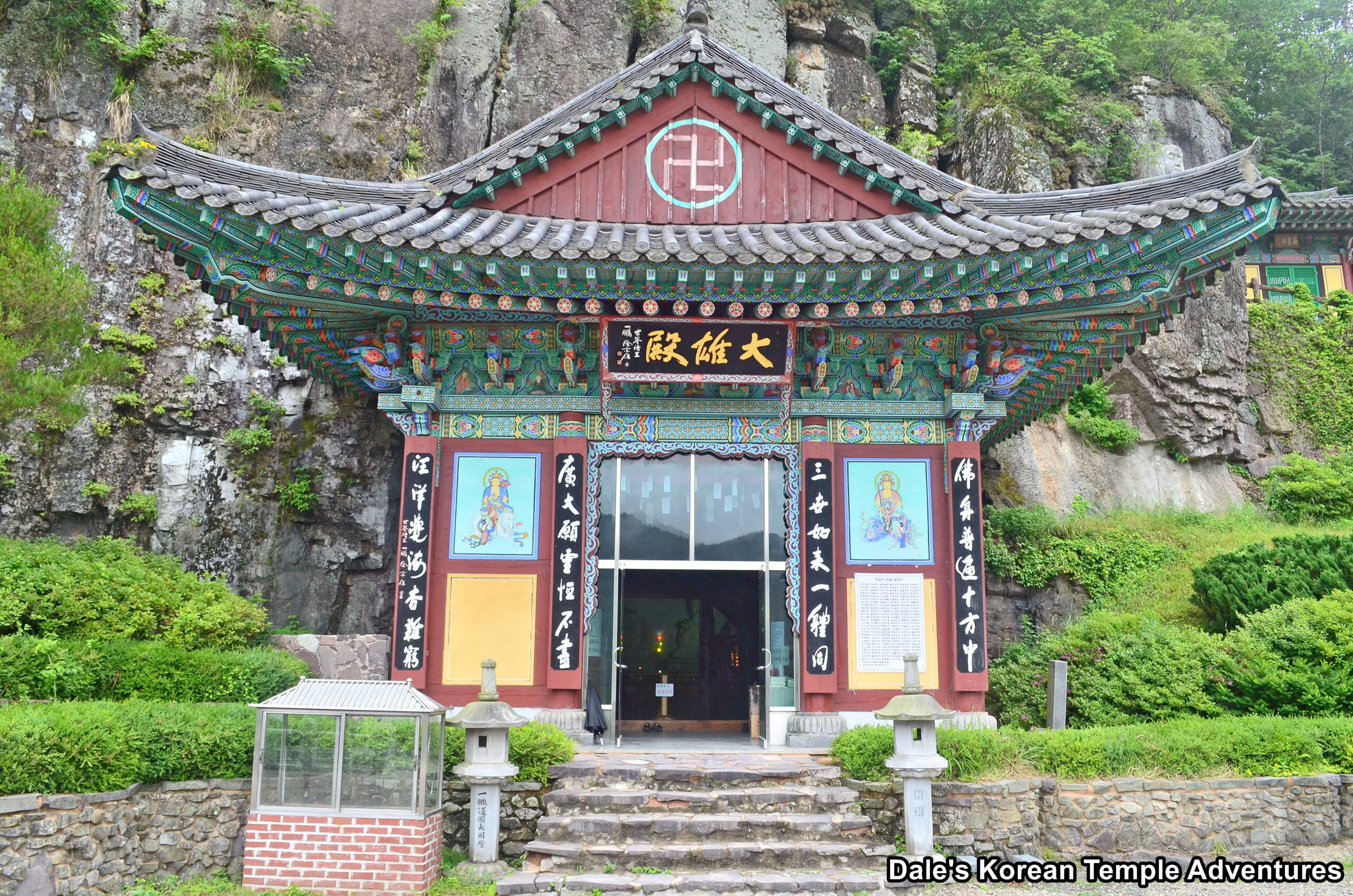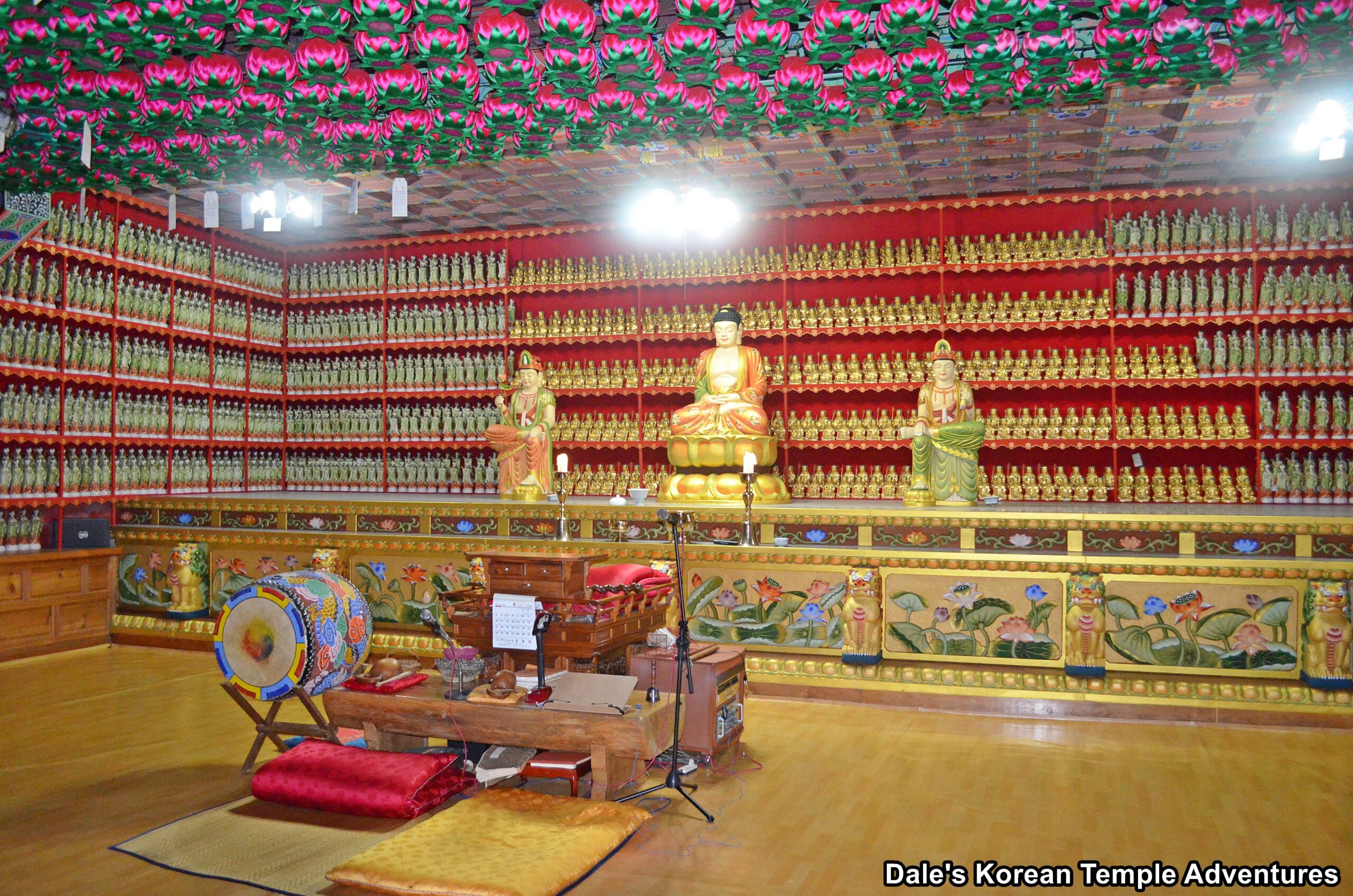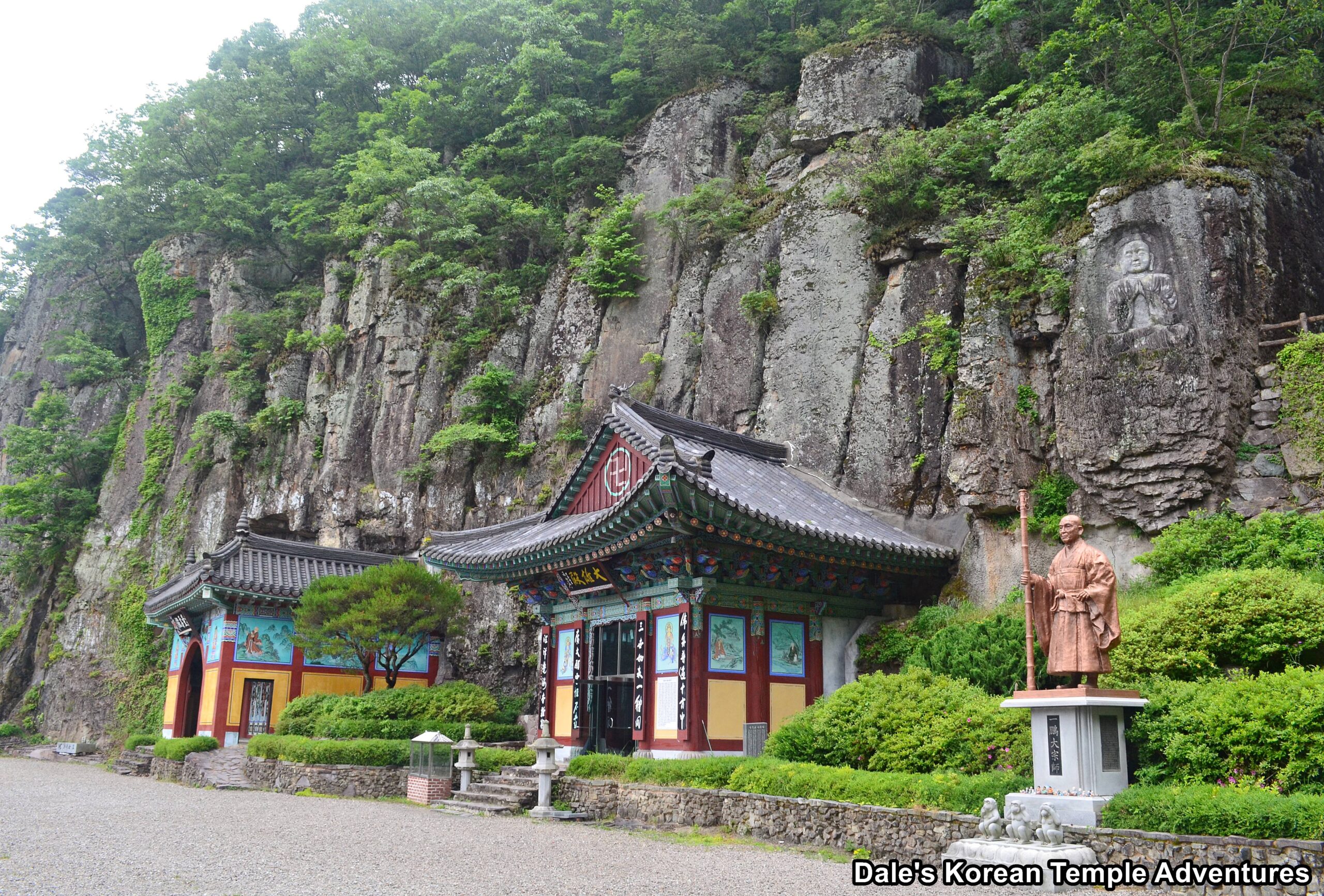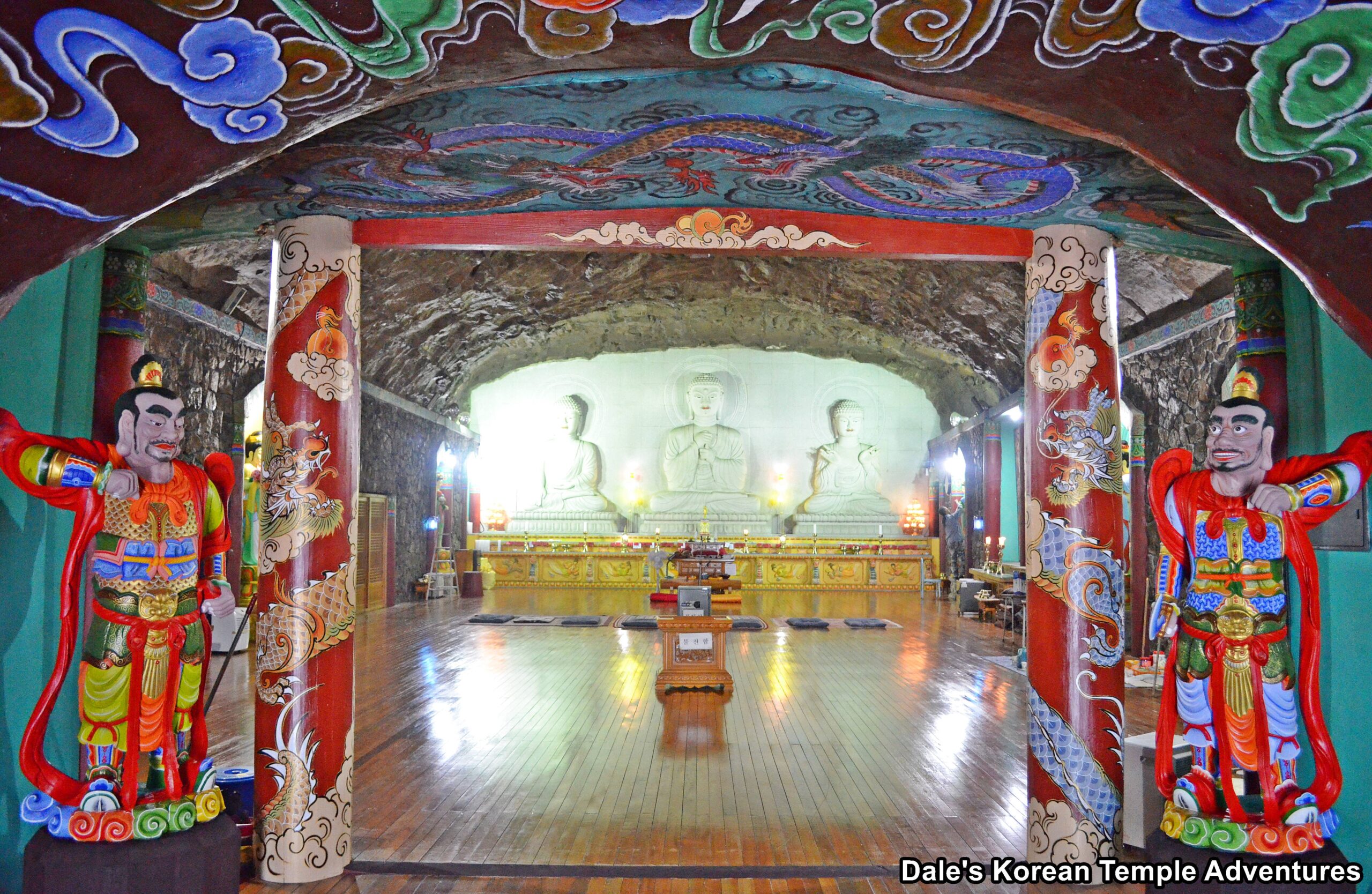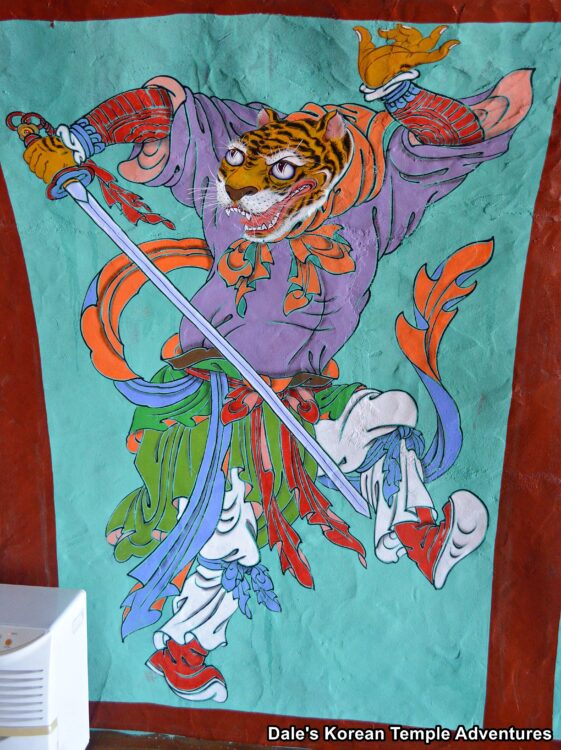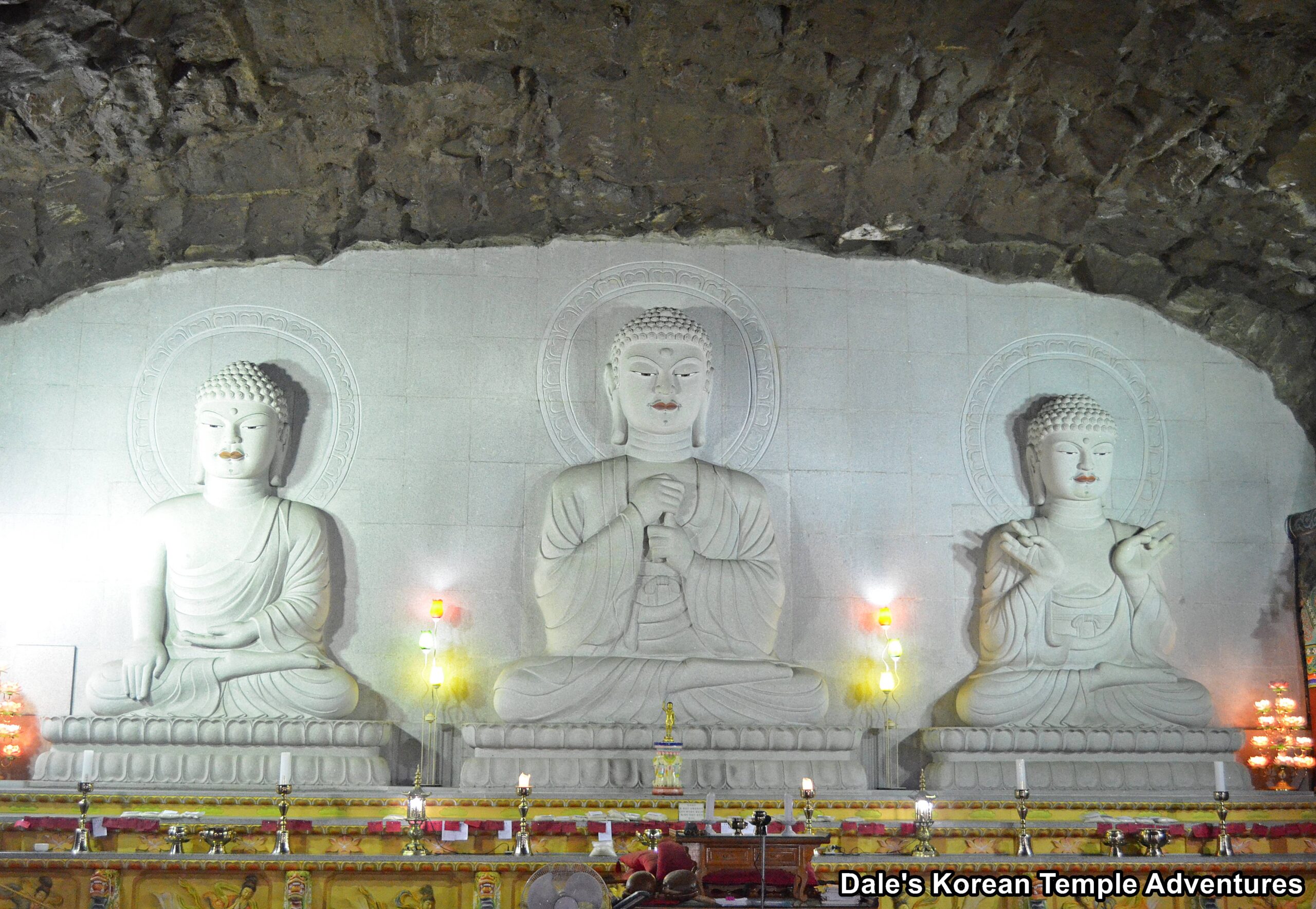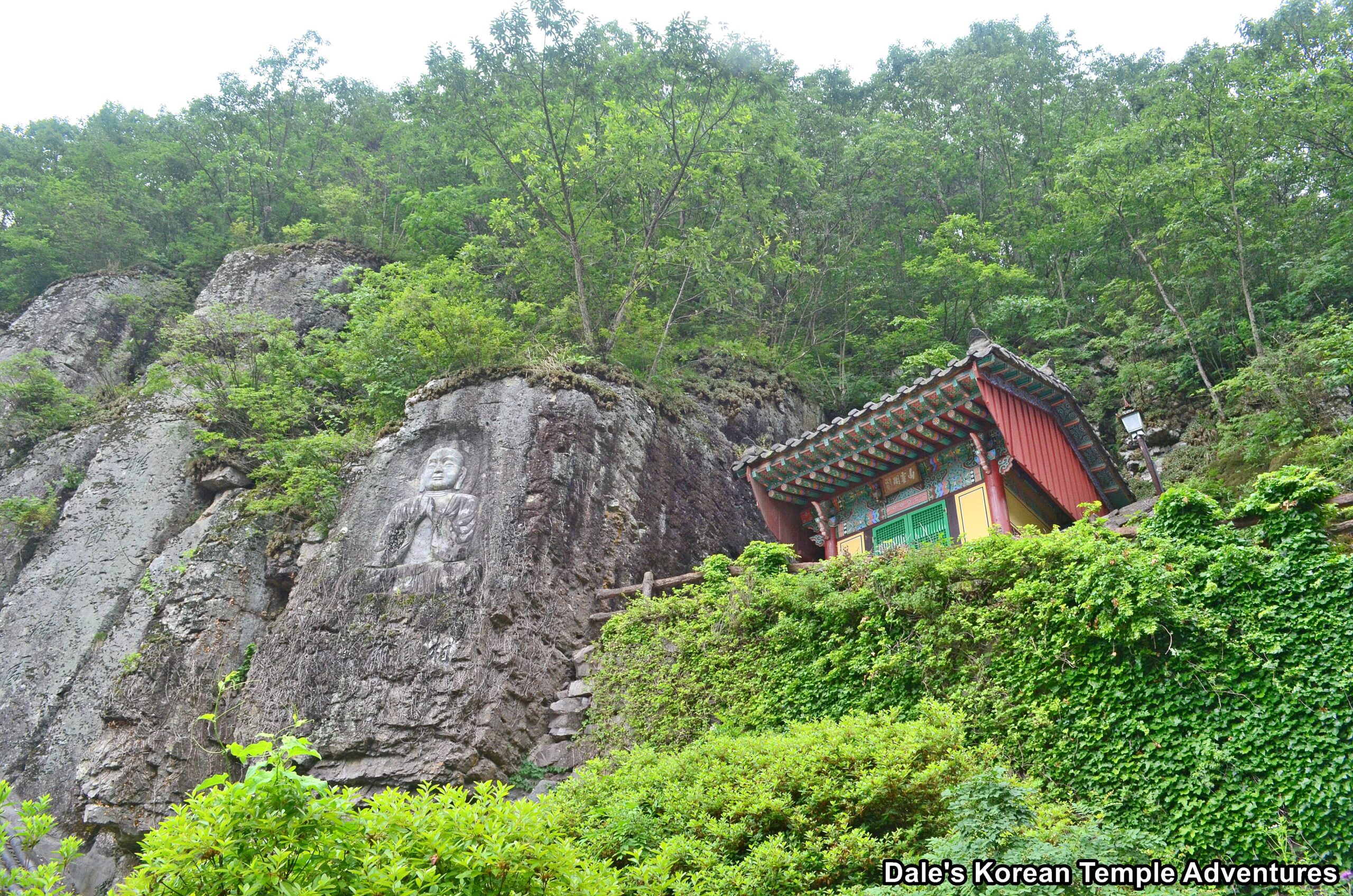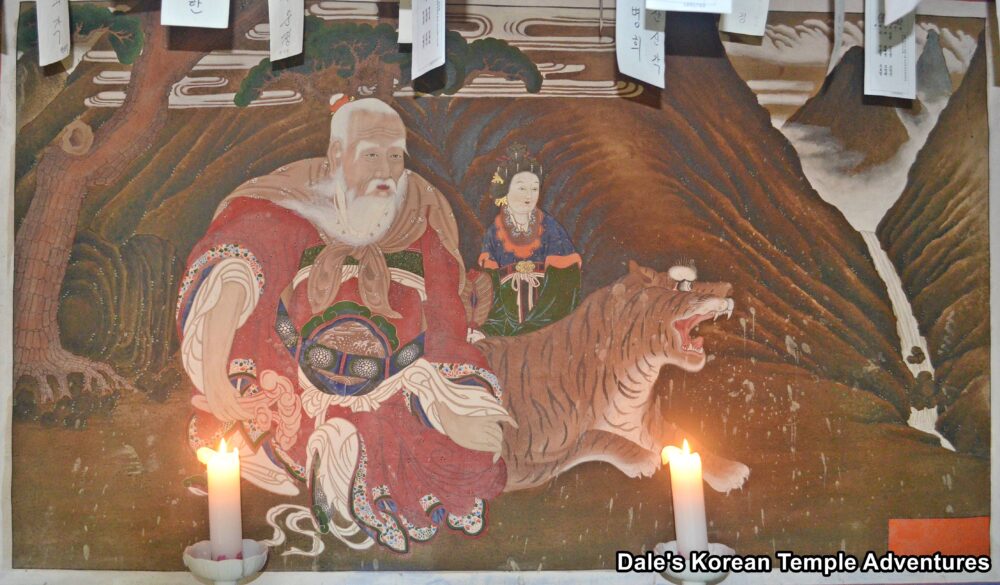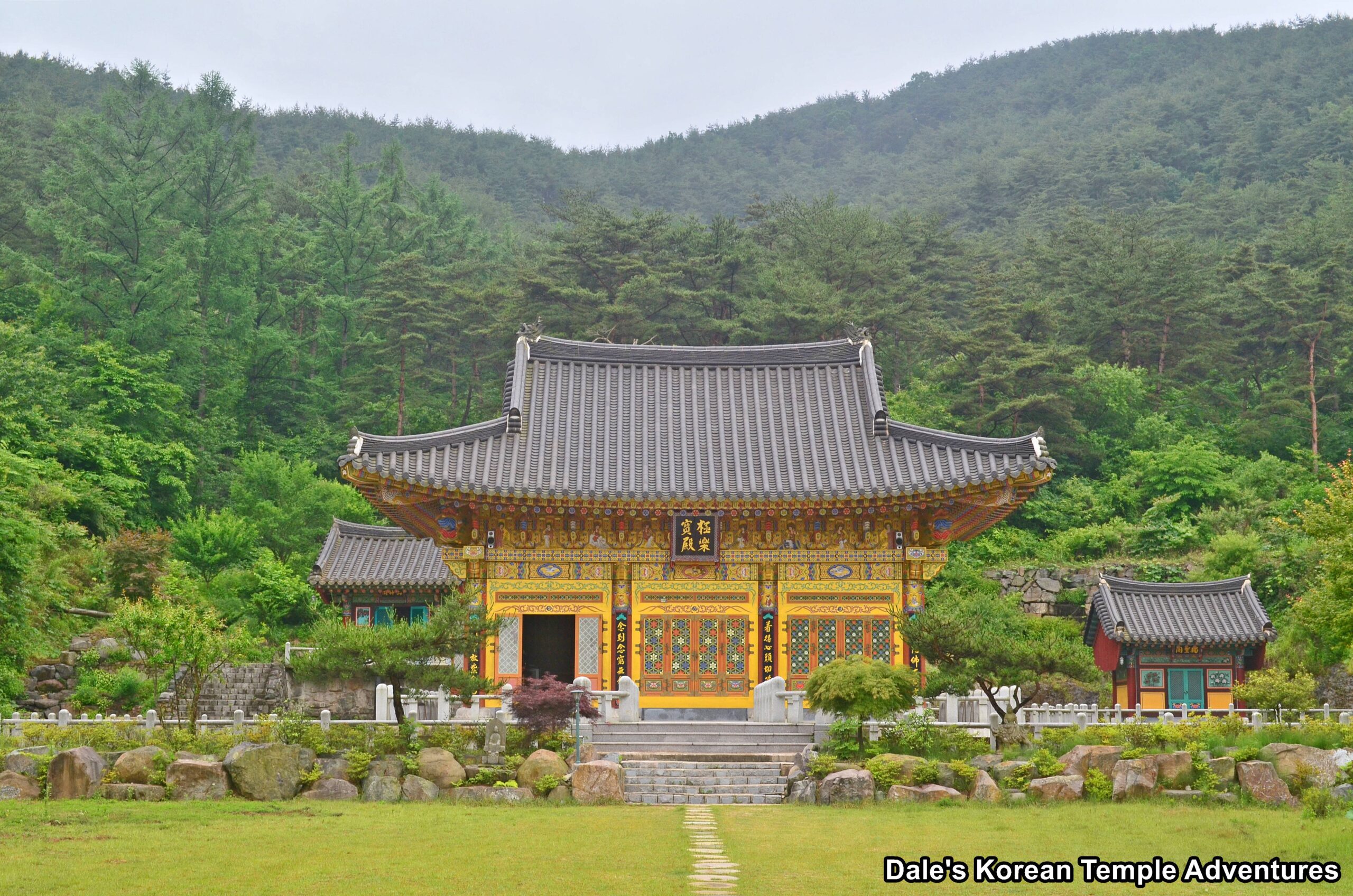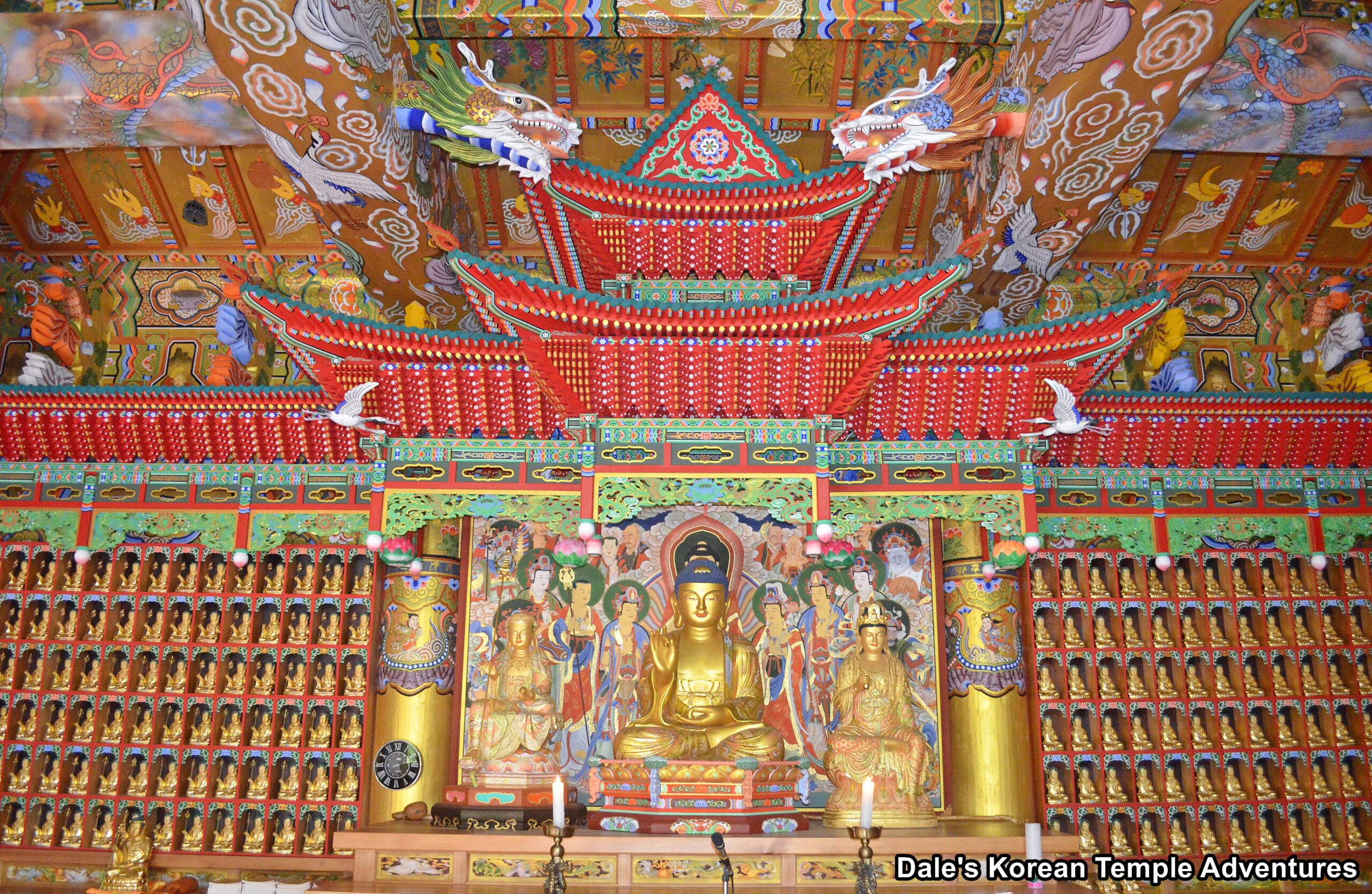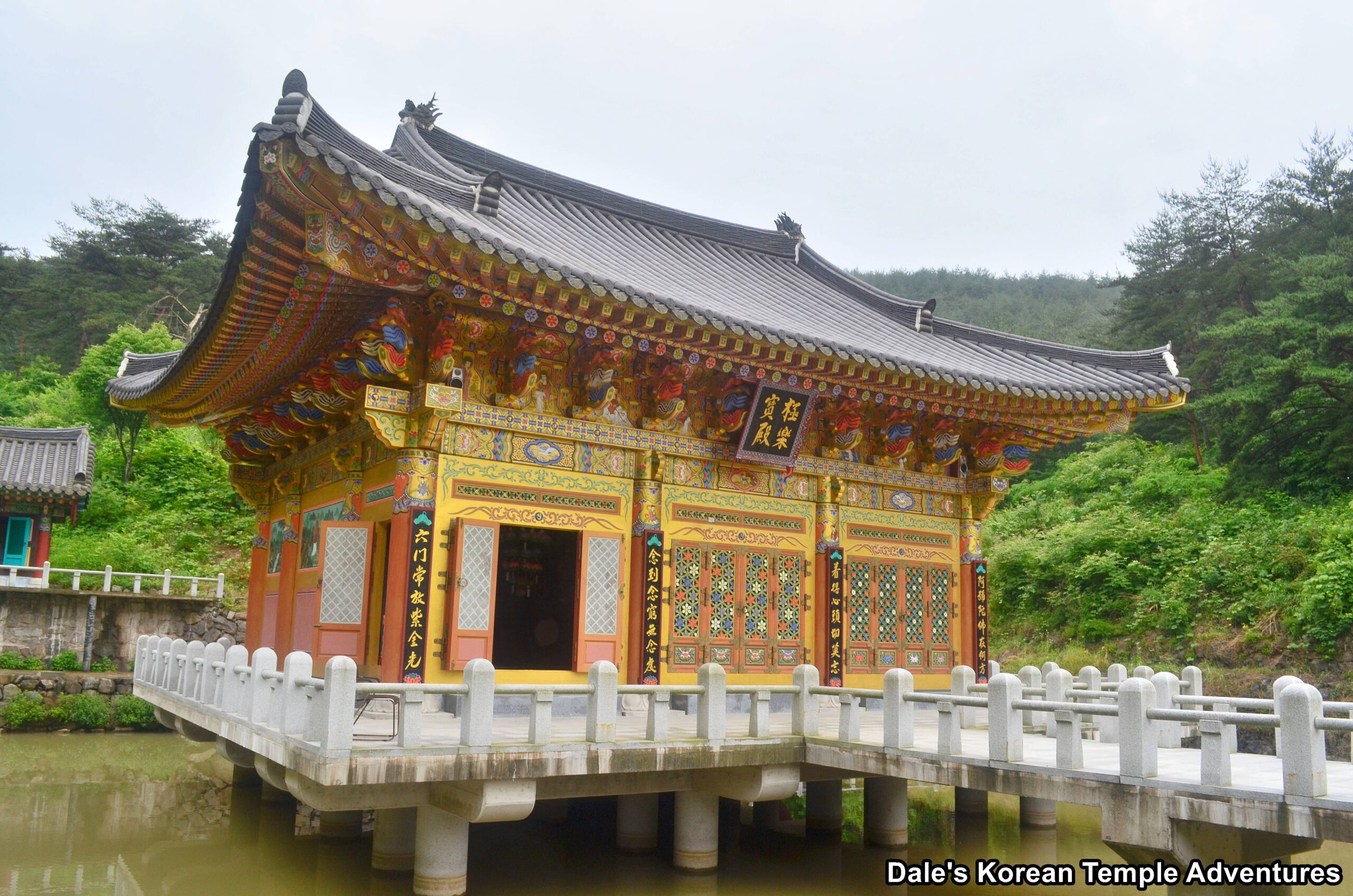Ilbungsa Temple – 일붕사 (Uiryeong, Gyeongsangnam-do)
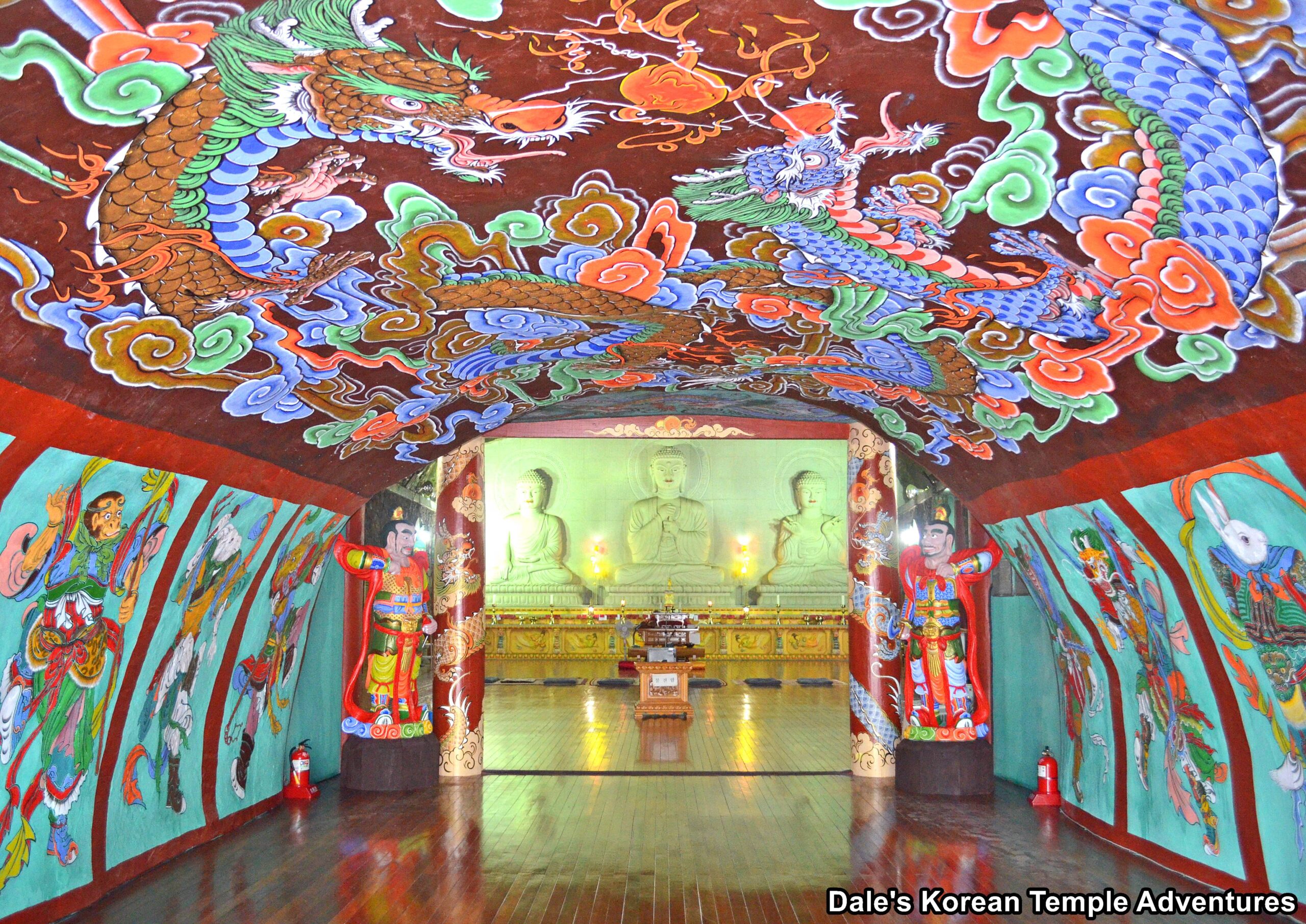
Temple History
Ilbungsa Temple is located in the rural and remote Uiryeong, Gyeongsangnam-do. And just to the south-west, you’ll find Mt. Seonamsan (528 m). For a Korean Buddhist temple, Ilbungsa Temple is uniquely situated next to the Yugok-cheon River in front of a sheer rock cliff wall.
In 727 A.D., the monk Hyecho returned to the Silla Kingdom (57 B.C. – 935 A.D.) from a Buddhist pilgrimage to both China and India. During his travels, Hyecho had a dream in which Jijang-bosal (The Bodhisattva of the Afterlife) appeared. Jijang-bosal appeared in the Buddhist monk’s dream, while smiling peacefully on a cliff surrounded by rocks of fantastic shapes and sizes. In this dream, Hyecho was told to build a temple on this type of topographical site. If he did this, the temple would remain as a treasure to the country where people could console the spirits of the dead. Upon his return to the Korean peninsula, Hyechol told King Seongdeok of Silla (r. 702-737 A.D.) about his dream. Afterwards, Hyecho looked for a similar place that had appeared in his dream. After finding such a place, he built a temple that he named Seongdeoksa Temple after the great Silla king.
In the intervening years, Seongdeoksa Temple was destroyed by fire numerous times. And for the longest time, no one dared rebuild the temple because the site was so sacred. It wasn’t until 1987 that the monk Haeun decided to rebuild Seongdeoksa Temple. He decided to rebuild the temple because of its location on the mountain. Also, it was said to have really good fire energy. To help avoid any future damage, Haeun decided to construct the main hall, the Daejeokgwang-jeon Hall, inside an artificially constructed cave. With this change to the main hall, the temple was renamed Ilbungsa Temple.
Temple Layout
When first approaching Ilbungsa Temple, you’ll first notice just how sheer the rock face is where the temple is located. The trail leading into Ilbungsa Temple is lined with stone statues of figures like the Bodhidharma and Podae-hwasang (The Hempen Bag). These statues are backed by a row of stone pagodas.
The first actual temple structure that you’ll encounter at Ilbungsa Temple is the Cheonwangmun Gate/Jong-ru. The first floor, of the two-story structure, is dedicated to the Cheonwangmun Gate. Housed inside this entry gate are rather diminutive statues dedicated to the Four Heavenly Kings. The exterior and interior walls to this first story structure are adorned with a beautiful collection of Shimu-do (Ox-Herding Murals). The second story of the structure, the Jong-ru (Bell Pavilion), is home to a large bronze Brahma Bell.
Passing through the Cheonwangmun Gate, you’ll have now entered into the lower courtyard at Ilbungsa Temple. To your immediate left is the visitors centre and the monks’ dorms. And straight ahead of you is an apartment-looking white building that houses the retiree population at the temple.
A little further along, and still looking to the left, you’ll encounter all of the important shrine halls in the lower courtyard. Before climbing the stairs, you’ll notice a shrine hall to your right. And out in front of this shrine hall is a simplistic nine-story stone pagoda. As for the shrine hall, it’s dedicated to the modern founding monk of Ilbungsa Temple. Stepping inside this hall, you’ll find a painting of Haeun in an ornate, golden frame.
Up a set of stairs that extend over a Koi pond, you’ll now be standing in the upper courtyard. In the upper courtyard, and to the far left, you’ll find another residence for the monks at Ilbungsa Temple. Perched precariously on the face of the mountain is the Dokseong-gak Hall. This smaller sized hall houses a larger sized statue of Dokseong (The Lonely Saint). To the right of this shaman shrine hall is a small waterfall.
To the right of this waterfall is the temple’s Geukrak-jeon Hall. The front doors are adorned with beautiful latticework. Stepping inside the Geukrak-jeon Hall, you’ll instantly find that the hall is filled with hundreds of tiny statues of Jijang-bosal (The Bodhisttva of the Afterlife). Resting on the main altar is a triad centred by Amita-bul (The Buddha of the Western Paradise). And this central image is joined on either side by Gwanseeum-bosal (The Bodhisattva of Compassion) and Daesaeji-bosal (The Bodhisattva of Wisdom and Power for Amita-bul). All three of these statues are rather atypical in colour and design.
One of the main highlights to Ilbungsa Temple is the Daejeokgwang-jeon Hall. The Daejeokgwang-jeon Hall is located in a large cave, which is eight metres tall and 1,260 m2 in size. This was done by the monk Haeun, upon the temple’s most recent rebuild, to prevent fires from ravaging the temple grounds like they have done so often in Ilbungsa Temple’s past. And given the main hall’s size, the Daejeokgwang-jeon Hall is the largest of its cave-like kind in all of Asia. In fact, its size has been recognized by the Guinness Book of World Records.
The front facade to the Daejeokgwang-jeon Hall looks like any other main hall you might encounter in Korea. It’s only when you step inside the main hall that you see just how different it actually is. The spacious corridor that leads into the inner chamber is decorated with stunning murals of the Sibiji-shin (The Twelve Spirit Generals), as well as an amazing dragon mural adorning the ceiling of the cave’s linking corridor. Stepping inside the large inner chamber of the Daejeokgwang-jeon Hall, you’ll notice three equally large stone reliefs on the main altar. In the middle of the main altar, you’ll find Birojana-bul (The Buddha of Cosmic Energy). This relief is joined to the left by Seokgamoni-bul (The Historical Buddha) and to the right by Nosana-bul (The Reward Body Buddha). Filling out the inner chamber of the Daejeokgwang-jeon Hall are various paintings and statues dedicated to various Buddhas and Bodhisattvas.
The next temple structure to the right of the Daejeokgwang-jeon Hall is an open pavilion that houses a stone statue of Yaksayeorae-bul (The Medicine Buddha). The whiskered Buddha cradles a medicine jar in his left hand. And underneath this outdoor Yaksa-jeon Hall, on the first floor of the two-story structure, is the Yongwang-dang Hall, which is also an outdoor shrine. The mountain water flows to the left inside this open structure, while a stone statue of Yongwang (The Dragon King) is placed to the right.
To the left of this two-story structure dedicated to Yaksayeorae-bul and Yongwang is a bronze statue dedicated to the monk Haeun. And in front of this statue are three stone monkeys that embody the “Hear No Evil, See No Evil, and Speak No Evil” philosophy. Between this statue and the Yaksa-jeon Hall are a flight of stairs that lead up to the Sanshin-gak Hall at Ilbungsa Temple. Stepping inside this newly built shaman shrine hall, you’ll find a mural dedicated to both a male and female Sanshin (Mountain Spirit).
The other amazing highlight to Ilbungsa Temple, in a long list of highlights, is the golden Geukrak-jeon Hall that’s situated some five hundred metres to the rear of the main temple courtyard. Recently, this has been converted to be included in the newly constructed and expanded Seodamam Hermitage. It’s a bit of a hike, as the road is almost exclusively a hill; but if you’re willing, there are signs that will guide your way. The first sign that you’re nearing the Geukrak-jeon Hall are the headstones for the recently departed. The golden Geukrak-jeon Hall sits in the middle of a Koi pond, elevated above the murky water. The exterior walls to this shrine hall are adorned with Shimu-do (Ox-Herding Murals) that are expertly rendered. As for the interior, and stepping inside the Geukrak-jeon Hall, you’ll find a triad of statues centred by Amita-bul. This triad on the main altar is surrounded by an ornately decorated red datjib (canopy).
And in the back left and right corners, and across two separate stone bridges, are three additional shaman shrine halls. The shaman shrine hall to the left rear is that of the Sanshin-gak Hall. The Sanshin-gak Hall houses a rather plain statue dedicated to Sanshin (The Mountain Spirit). And the shaman shrine halls to the right rear is that of the Dokseong-gak Hall. Housed inside this shaman shrine hall is a wooden relief, with a rather strange face, of Dokseong (The Lonely Saint). And the other shaman shrine hall in this area is the Yongwang-dang Hall, which is dedicated to the Dragon King.
How To Get There
From the Uiryeong Intercity Bus Terminal, you’ll need to take a taxi to get to Ilbungsa Temple. The ride should take about forty minutes, and it’ll cost you anywhere between fifteen to twenty thousand won.
Overall Rating: 8.5/10
Ilbungsa Temple is little known in the expat community, which is a shame. There are numerous highlights at Ilbungsa Temple like the cave Daejeokgwang-jeon Hall, the floating Geukrak-jeon Hall at Seodamam Hermitage, and the male and female Sanshin painting in the upper courtyard at Ilbungsa Temple. There are other beautiful features, but just too many to name; instead, they need to be experienced and explored. And experience and explore them, you definitely should!
